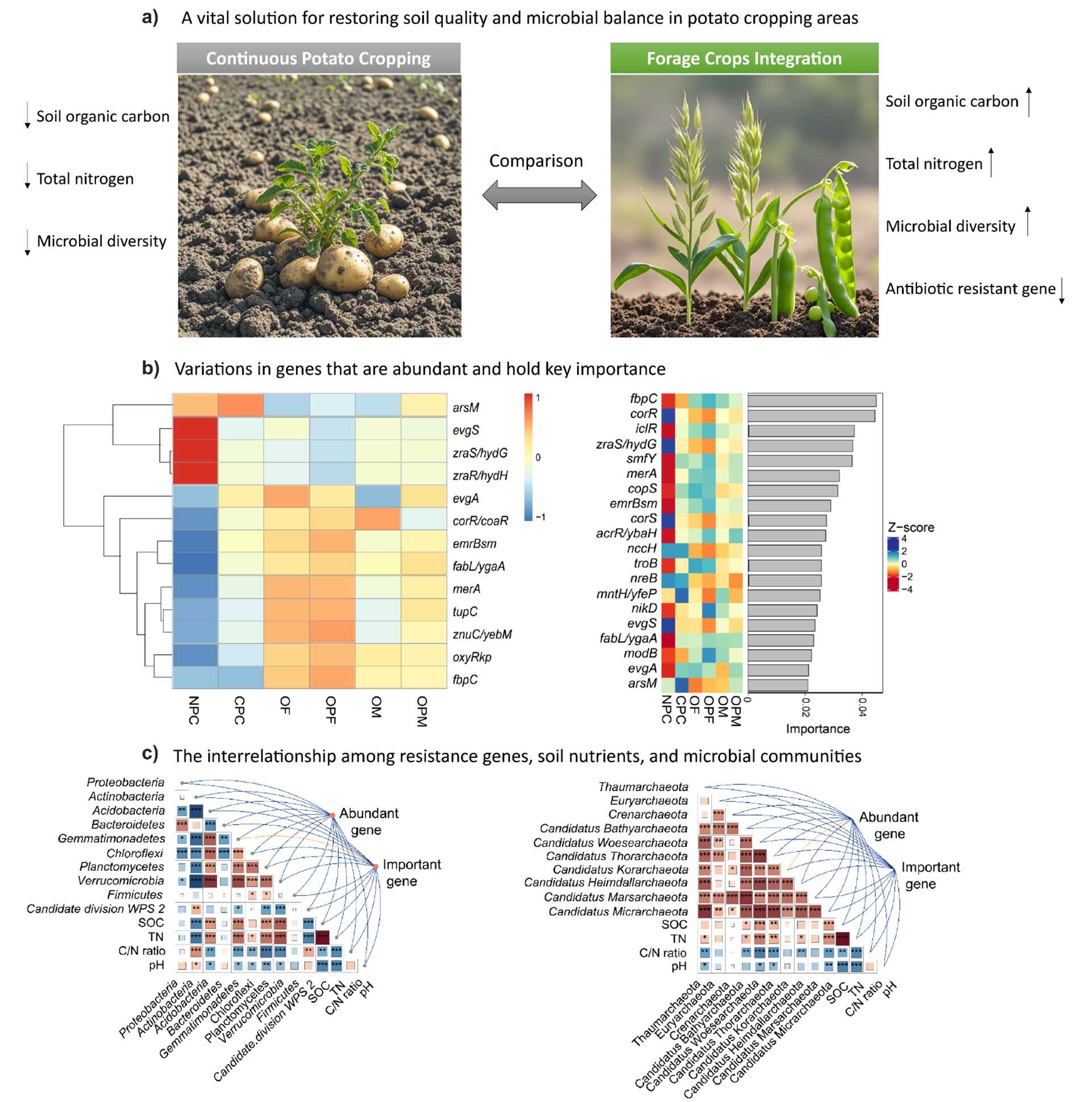
Potato is a widely cultivated staple food that is crucial for food security. However, its intensive cultivation has led to environmental challenges such as soil degradation, water depletion, and microbial contamination, especially in semi-arid regions. The overuse of chemical fertilizers and pesticides further contributes to soil and water pollution, threatening human health and biodiversity.
To tackle these challenges, joint research teams from the Kunming Institute of Botany of the Chinese Academy of Sciences (CAS) have examined the role of forage grass cultivation within semi-arid potato continuous cropping systems. This study focuses on its impacts on soil bacterial and archaeal communities, as well as the genes related to pathogenic factors and antibiotic resistance genes (ARGs). Their findings were published in Resources, Environment and Sustainability.
The researchers found that potato-forage rotation significantly improved soil physical and chemical properties. In comparison to non-potato cultivation, continuous potato cropping (CPC) reduced soil organic carbon levels (from 31.9 g kg⁻¹ to 15.7 g kg⁻¹) and total nitrogen content (from 3.7 g kg⁻¹ to 1.6 g kg⁻¹), indicating a serious decline in soil fertility.
In this study, among the ten identified soil phyla, Proteobacteria demonstrated the highest relative abundance, increasing from 34.6% to 38.4%, followed by Actinobacteria, which ranged between 20% and 36%. These phyla are crucial for maintaining soil health.
Additionally, CPC produced more specific antibiotic resistance genes (ARGs) than non-potato cultivation, suggesting that CPC encourages the selection of resistance traits within the soil microbiome, closely linked to the composition of microbial communities.
Forage crops, such as oats or oat-pea mixtures, had varying effects on ARGs during different growth stages. Differences observed between the flowering and maturity stages of oats indicated that plant growth and root exudate composition can influence microbial communities and the proliferation of ARGs.
Furthermore, mantel tests indicated that specific soil properties affect the abundance of microbial taxa and determine the expression of key functional genes related to ARGs. These findings underscore the complex interactions among microbial communities, genes, and soil health
This study emphasizes the advantages of crop diversification—specifically through the introduction of forage crops—in maintaining soil health and microbial diversity. The results offer new perspectives for designing sustainable agricultural strategies that enhance soil fertility and promote ecosystem stability in semi-arid regions.
This work was funded by the Strategic Priority Research Program of CAS, the Yunnan Province Talent Support Program for Young Scholars, among others.

Effects of potato-forage rotation on key nutrients, microbial communities, and ARGs in CPC soil (Image by KIB)

86-10-68597521 (day)
86-10-68597289 (night)

52 Sanlihe Rd., Xicheng District,
Beijing, China (100864)

